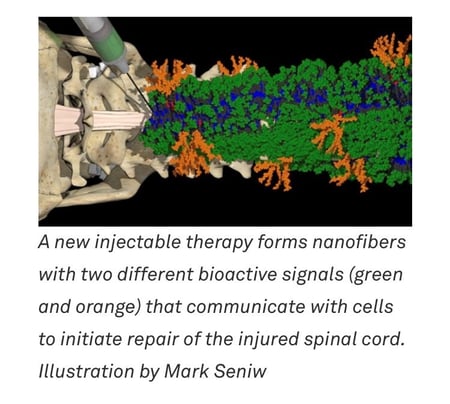Dancing Molecules
You suddenly find yourself or a close family member paralyzed.
Your life as you knew it forever changed in that one moment. You are thrown into a new world, shocked and overwhelmed. This is certainly how I felt on May 31, 2010, when my boy Zack broke his neck in a beach accident. He was a 15-year-old teenager. Now 11 years post-injury, he is a 27-year-old man.
During the past decade, I have learned things I never thought I would like learning how to care for a Quadriplegic and all that comes with that.

Since leaving the hospital, Zack has done physical therapy. In my mind, I’ve always thought we must keep his body strong and healthy, so when science comes up with a treatment, he will be a good candidate, living life in the meantime. We have watched a few people travel to other countries and try unique therapies or stem cell treatments, with some results but not enough for us to get on board. In the world of spinal cord injuries, it’s nice to share when we hear about any new developments.
Recently in an issue of Journal Science, an article shared the newest development for possible spinal cord recovery. Northwestern University researchers have recently developed a new injectable therapy, that harnesses “dancing molecules” to repair tissue after a spinal cord injury or illness. The article claims researchers administered a single injection to tissues surrounding the spinal cords of paralyzed mice, and just a month later, the animals regained the ability to walk. Once the therapy is performed, the materials biodegrade into nutrients for the cells and within 12 weeks disappear entirely from the body, without noticeable side effects. Our central nervous system, which includes the brain and spinal cord, cannot repair itself after injury or disease onset.
According to national SCI statistical center there are nearly 300,000 people currently living with a spinal cord injury in the United States. Scientist Samuel Stupp says there are no therapeutics that trigger spinal cord regeneration. The secret behind this new breakthrough is tuning the motion of molecules so they can find and properly engage constantly moving cellular receptors. Injected as a liquid the therapy immediately gels into a complex network of nanofibers that mimic the extracellular matrix of the spinal cord by matching the matrix’s structure. Then mimicking the motion of biological molecules and incorporating signals for receptors the synthetic materials can communicate with cells. Something that has never been done is to control the collective motion of more than 100,000 molecules within our nanofibers by making them move or dance even leap out of these structures. Then, they can connect effectively with receptors.
Once connected to the receptors, the molecules trigger two signals, both critical to spinal cord repair one prompts the tails of neurons in the spinal cord called axons and sends signals between the brain and the rest of the body. When axons are severed or damaged, this results in paralysis so repairing axons increases communication from body to brain. The second signal mimics the natural proteins that are needed to induce the desired biological responses. This is exciting news!
I’d advise anyone interested in learning more to look up this topic; I, of course, wanted to share what I’ve heard. Living with a spinal cord injury is most definitely not easy on anyone. I will continue to pray for a cure and hope to witness someday the people we love who have lost mobility to be able to move again on their own. What a wonderful feeling that would be!
Join Our Movement
What started as an idea has become a national movement. With your support, we can influence policy and inspire lasting change.
Become an Advocate